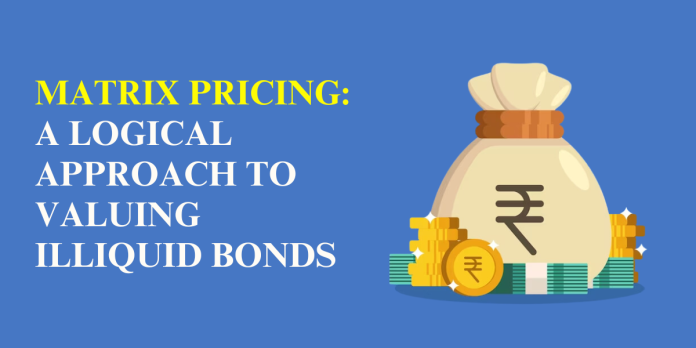Imagine a bustling marketplace, not for fruits or gadgets, but for bonds. But wait, some of these bonds are like shy wallflowers, rarely traded and shrouded in mystery. How do we know their price? Enter the fascinating world of matrix pricing, a detective’s toolkit for uncovering the hidden value of these elusive securities.
Why Matrix Pricing Matters?
Picture this:
You’re an investment guru, managing a portfolio with a diverse cast of bonds. Some are vibrant and active, their prices flashing on screens like neon signs. But then there are the introverts, the bonds issued in small quantities or by lesser-known entities. They lack the constant price updates of their popular peers.
So, how do you value them? That’s where matrix pricing steps in, like a financial Sherlock Holmes.
The Logic Behind the Matrix
Think of it as a game of “closest cousins.” Matrix pricing compares the mysterious bond to similar, actively traded bonds. These “cousins” share key traits like maturity date, coupon rate, and credit rating. By analyzing their prices and yields, we can infer the value of our hidden bond, the one lurking in the shadows.
The Tools of the Trade:
Matrix pricing isn’t just guesswork; it’s a data-driven approach. Here’s the toolbox:
- Yield to Maturity (YTM): This measures the expected total return of a bond if held until maturity. It’s like a compass, guiding us towards comparable bonds.
- Interpolation: Imagine a price map with actively traded bonds plotted as dots. Interpolation fills the gaps, estimating the price of our hidden bond based on its position relative to its “cousins.” Think of it like drawing a smooth curve between two points on a graph.
Putting it all together: A Hypothetical Case
Let’s say you own a 5-year bond from a small tech company, a bit of an odd duck in your portfolio. This bond rarely trades, and you’re curious about its value.
- Find Cousins: You search for actively traded bonds with similar maturities (around 5 years) and credit ratings (let’s say B+). You find two: Bond A with a 4% coupon and Bond B with a 6% coupon.
- Calculate YTMs: Using market data, you find that Bond A has a YTM of 5% and Bond B has a YTM of 6%.
- Interpolate: Since your bond has a 5% coupon, it falls right between Bond A and B. You use interpolation to estimate its YTM, say around 5.25%.
- Price Discovery: With the YTM, you can finally unlock the price! Using a bond pricing formula, you calculate that your hidden bond is worth roughly $95.
Read: Bonds: A Great Way To Invest For Income & Safety
Insights and Beyond
Matrix pricing isn’t perfect. It’s an estimate, not a crystal ball. But it’s a powerful tool for navigating the murky waters of illiquid bonds.
Remember
- Data is key: The more accurate and relevant the data on comparable bonds, the better the estimate.
- Assumptions matter: Be mindful of the assumptions made about the hidden bond’s characteristics.
- It’s not a one-size-fits-all: Matrix pricing is a technique, not a magic formula. Use it with judgment and consider other valuation methods.
So, the next time you encounter a bond shrouded in mystery, remember the power of matrix pricing. It’s like a financial decoder ring, helping you unlock the hidden value and make informed investment decisions, even in the shadows of the bond market.


